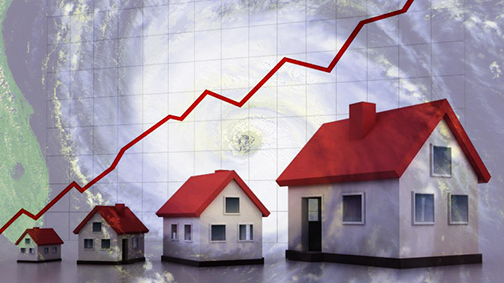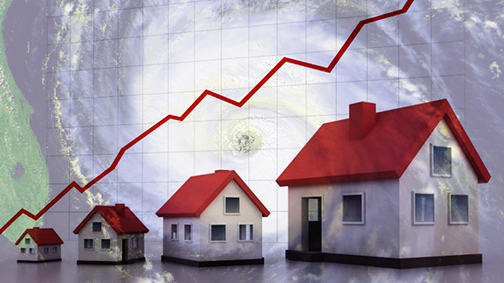

While the scale of destruction and suffering caused by Hurricanes Harvey and Irma is staggering, history suggests the local economy and housing markets in the affected areas will bounce back relatively quickly.
Each natural disaster is tragic in its own way, but some commonalities are apparent. Generally, natural disasters don’t permanently change underlying housing market fundamentals; they just disrupt things for a number of quarters, including causing sudden price hikes in less-affected communities as a result of the influx of displaced people. After an initial dip, the economy gets a near-term boost from reconstruction, before things return to normal.
How might economic activity, specifically housing, be affected by these storms?
The delinquency rates will spike locally due to employment disruption, but will not cause distress in the banking sector due to record levels of high-quality capital and strong and improving performance in the rest of the country. Some bond or portfolio investors will be affected, but the overall impact will be manageable.
With respect to economic activity, past severe weather impacts on job growth were short-lived, with an immediate drop in employment followed by three months of significant bounce-back, according to research by Keith Phillips and Christopher Slijk at the Dallas Federal Reserve. Understandably, numbers for Irma are still being calculated, but Harvey and Irma are projected to reduce third-quarter GDP growth for the United States between one-quarter and one-half of a percentage point and then similarly boost GDP growth in the fourth quarter, then more modestly in early 2018.
While fires and tornadoes make the news, the greatest share of losses from natural disasters is generated by hurricanes. Hurricanes also have the highest average loss per event and are the most frequent large-dollar disaster event, which can be sobering, given that we had an active hurricane season. The impact of climate change is beyond the scope of this article, but it’s worth noting that loss estimates seem to double every 10 years as cities expand and storm intensities increase.
Similarly, impacts on home prices have typically been short in duration. In fact, home price trends do not appear to change fundamentally, suggesting people rebuild and get on with life. Research by Eli Beracha and Robert S. Prati found that “one full year following a hurricane, little evidence emerges suggesting a lingering effect on residential real estate prices.”
Researchers at the Dallas Federal Reserve similarly stated, “The typical hurricane strike raises real house prices for a number of years, with a maximum effect of between 3% to 4% three years after the occurrence. There is also a small negative effect on real incomes.”
Federal Housing Finance Agency researchers who looked at the impact of Hurricane Andrew specifically observed that “price appreciation rates were positively affected by Hurricane Andrew. After about two years, appreciation patterns in all of the regions fell to rates close to pre-hurricane levels.”
While home prices per se seem unlikely to be significantly affected in the long term, the scale of these storms suggests we could see some impact to the housing market. For example, housing starts could be delayed, as builders must wait for the saturated ground to dry out. The lack of flood insurance coverage for many residents affected by Harvey may also have an impact. Fewer than one in six residents of Harris County, home to Houston and the nation’s third-largest county, have flood coverage according to the National Flood Insurance Program. This will partially hinder the boost to the economy from rebuilding and make federal loans more important.
Finally, where we are in the business cycle affects markets and our ability to bounce back. The recovery from Hurricane Ike in 2008 was delayed because of the deep national recession, while Harvey struck when the construction industry was already experiencing shortages of labor and materials. Thus, we can expect to see a rise in the cost of construction materials and possibly even slight slowdowns nationally in new home builds as construction workers are diverted to rebuilding.
By Ralph DeFranco Bloomberg October 11 2017





No comment yet, add your voice below!